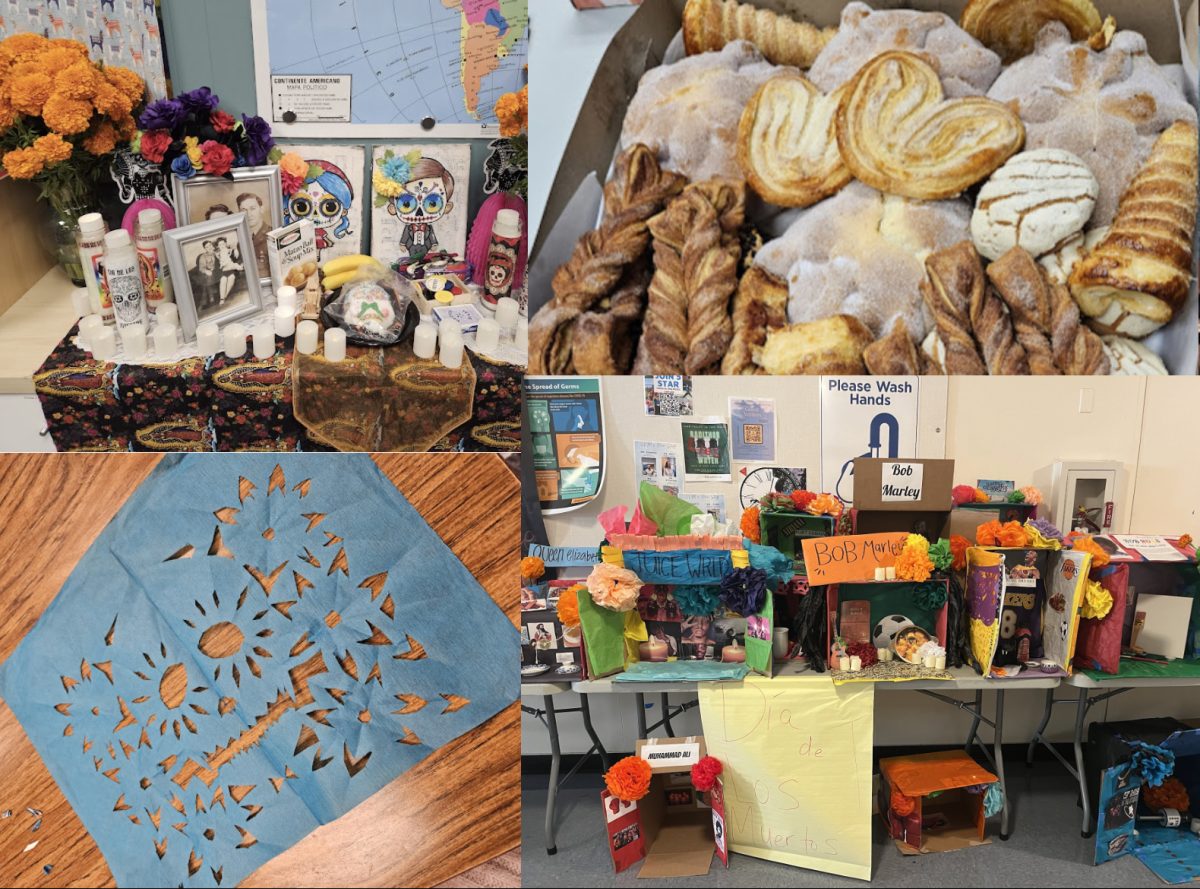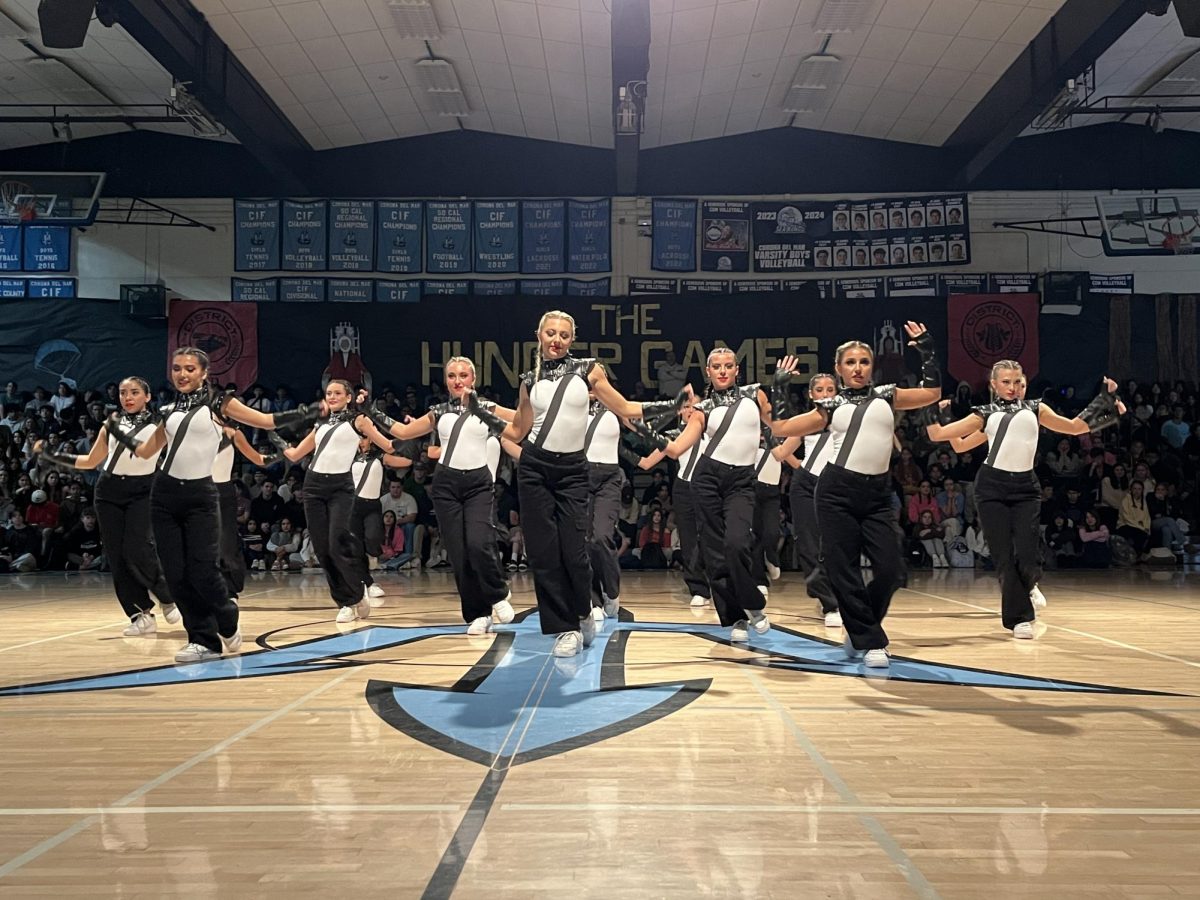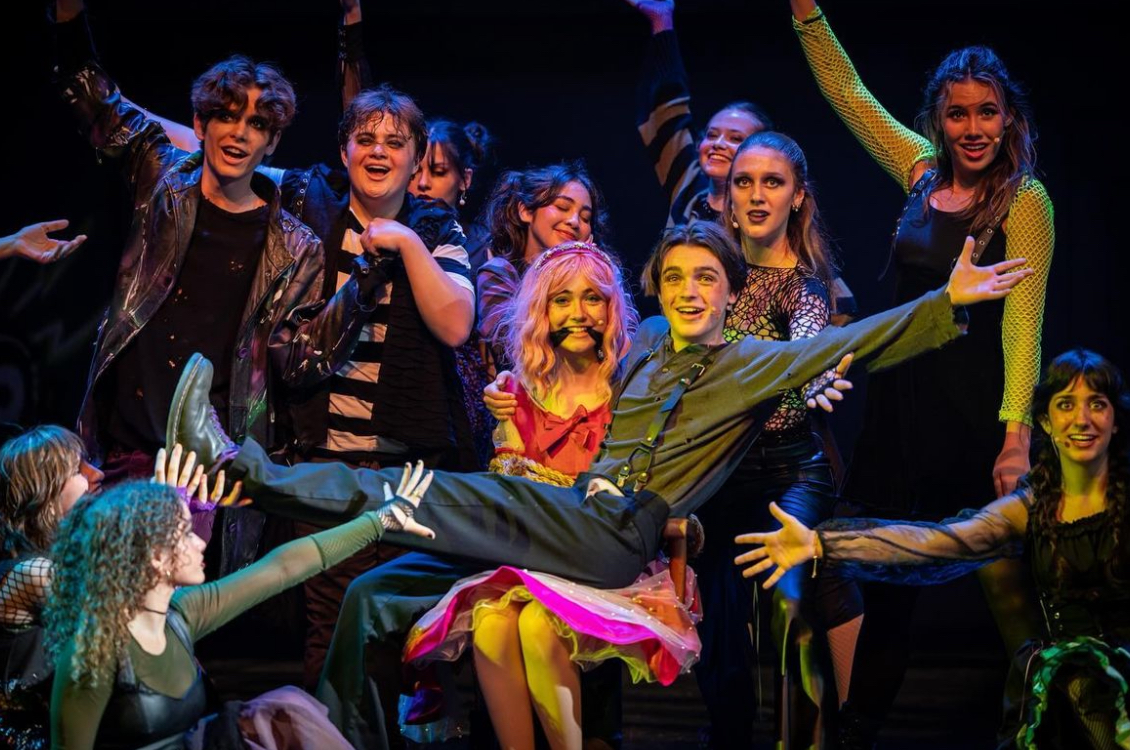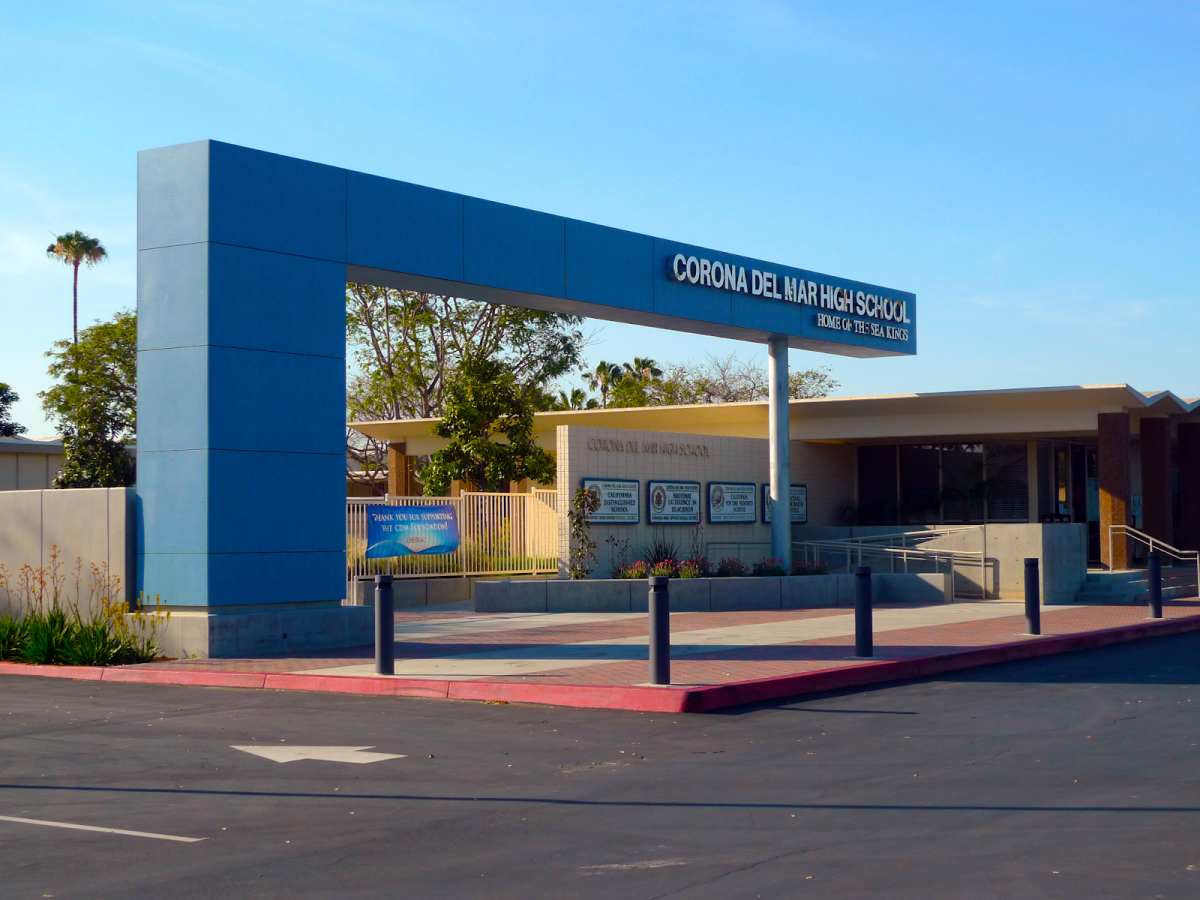The Day of the Dead (Día de Muertos) is a Mexican holiday that takes place on the first and second day of November every year; it is believed that these are the dates when the dead return to visit their friends and family. November 1st is known as “All Saint’s Day”, which is dedicated to deceased children; and November 2nd is known as “All Soul’s Day”, which is dedicated to deceased adults. Despite what many people think, the Day of the Dead has nothing to do with Halloween, but it has everything to do with remembering the lives of people who have passed away. Mexican and non-Mexican individuals alike celebrate this festive holiday, and this year, Spanish classes at CdM are taking part in projects commemorating Día de Muertos. “I really love learning about el Día de los Muertos, because it’s just so interesting to learn about holidays from other cultures. I also love that this holiday is all about the ancestors,” says Spanish 2 student, Zalia Dixon.
Through various crafts and celebrations middle school students in Señora McCormick’s classes are decorating calaveras (skulls) with bright colors and tissue paper flowers in commemoration of the holiday. Spanish teacher Sra. Fajardo shared that her class “has been working on honoring the dead by creating skeletons to resemble the person they are honoring.” The skeletons are decorated in clothing the person would have worn, along with items that were meaningful in the person’s life. For instance, if the person was a soccer player, then they would most likely be wearing a jersey and carrying a soccer ball. Along with the skeletons, students are also writing mini-biographies in Spanish about the person’s life and achievements.
Señora Ramirez’s Spanish 3 classes are making ofrendas, or altars, as part of their Día de Muertos celebration. Señora Ramirez explains that, “Ofrendas are altars that people decorate for their family. People in Mexico and even in Los Angeles create these huge ofrendas, filled with things their ancestors loved, like food or hobbies. For example, if the person was a musician, you would put their music or instrument on it.” Typically, ofrendas are grand in size, but since there is limited space in the classroom, they are making mini-ofrendas for the person they have selected to honor. Ofrendas are colorful and always have items that represent the four elements – water, fire, wind, and earth. Cempasúchils, or marigolds, also known as the “flower of the dead,” are placed on ofrendas and scattered around everywhere to help guide the dead to their family homes. This flower is used because of its sweet, strong scent and bright orange color.
Señora Pulido’s Spanish classes are celebrating the many aspects of Día de Muertos, from making sugar skulls to cutting papel picado (“punched” paper), they’re doing it all. Sugar skulls portray a departed loved one and are often used for offerings to the dead. As the name suggests, they are made out of sugar that is pressed into molds and decorated with colorful frosting. Papel picado is lightweight tissue paper with intricate patterns and designs cut into them. They are hung up everywhere during the celebration, and since they are so light, it is said that when they move, it is letting the family know that their loved ones have come to visit. Of course, it wouldn’t be a proper Día de Muertos without the food. Along with arts and crafts, they also enjoyed eating pan dulce (Mexican sweet breads), Pan de Muerto, and drinking Jarritos.
The Day of the Dead is a colorful celebration and the festivities have made their way to CdM Spanish classes, with each class finding ways to celebrate this holiday along with learning about Mexican culture.








